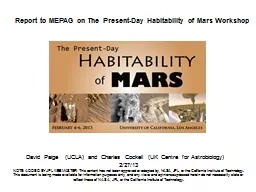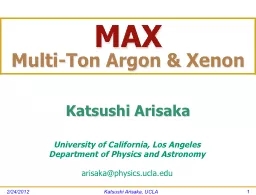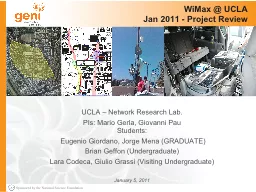PPT-David Paige (UCLA) and Charles
Author : test | Published Date : 2016-09-04
Cockell UK Centre for Astrobiology 22713 NOTE ADDED BY JPL WEBMASTER This content has not been approved or adopted by NASA JPL or the California Institute of Technology
Presentation Embed Code
Download Presentation
Download Presentation The PPT/PDF document "David Paige (UCLA) and Charles" is the property of its rightful owner. Permission is granted to download and print the materials on this website for personal, non-commercial use only, and to display it on your personal computer provided you do not modify the materials and that you retain all copyright notices contained in the materials. By downloading content from our website, you accept the terms of this agreement.
David Paige (UCLA) and Charles: Transcript
Download Rules Of Document
"David Paige (UCLA) and Charles"The content belongs to its owner. You may download and print it for personal use, without modification, and keep all copyright notices. By downloading, you agree to these terms.
Related Documents














